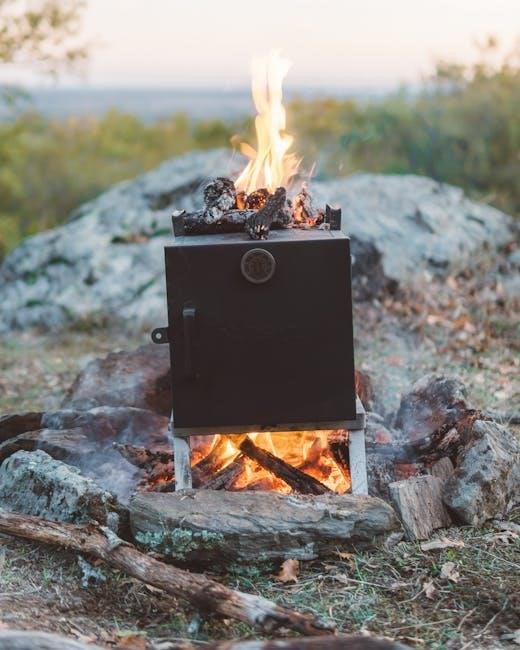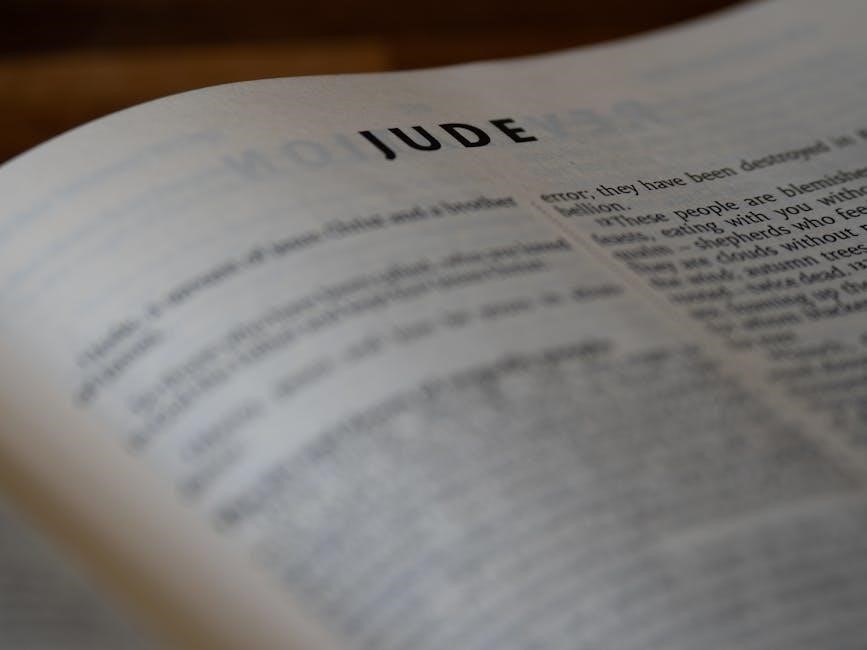Choosing the right tablecloth length ensures a polished look and functionality. This guide helps determine the perfect fit for any table shape‚ size‚ and any event purpose.
Understanding the Importance of Tablecloth Size
A properly sized tablecloth enhances both aesthetics and functionality. It prevents table legs from being visible‚ avoids tripping hazards‚ and ensures a polished appearance. The right size depends on the table’s shape‚ size‚ and desired drop length. For round tables‚ the diameter determines the cloth size‚ while rectangular tables require measuring length and width. A standard drop of 8-9 inches is common for casual settings‚ while formal events may require longer drops. Correct sizing ensures comfort and style for any occasion.
Incorrect sizing can lead to an unattractive setup or practical issues. A tablecloth that’s too small may expose the table’s edges‚ while one that’s too large can overwhelm the space. Measuring accurately and considering the event’s formality helps select the ideal size. Whether for a wedding‚ party‚ or everyday use‚ the right tablecloth size creates a cohesive and inviting atmosphere. Investing time in choosing the correct dimensions ensures a flawless presentation and lasting impression.

Common Table Shapes and Their Tablecloth Requirements
Tables come in round‚ square‚ rectangular‚ and oval shapes‚ each requiring specific tablecloth sizes. The size depends on the table’s dimensions and the desired drop length.
Round Tables
Round tables require tablecloths that match their diameter for a perfect fit. Measure the table’s diameter‚ then add twice the desired drop length to determine the tablecloth size. For example‚ a 70-inch round table with a 30-inch drop needs a 130-inch diameter tablecloth. Formal events often use floor-length drops‚ while informal settings may opt for shorter drops. Standard sizes include 70‚ 90‚ 108‚ 120‚ and 132 inches. Always measure accurately to ensure the cloth drapes evenly around the table for a polished look.
Square Tables
For square tables‚ the tablecloth size is determined by adding twice the desired drop to the table’s length and width. For example‚ a 42-inch square table with a 12-inch drop requires a 58×58-inch tablecloth. Measure the table’s length and width‚ then calculate the drop on all sides. Standard square tablecloth sizes include 52×52‚ 58×58‚ and 70×70 inches. For a polished look‚ ensure the cloth hangs evenly on all sides. Larger drops are ideal for formal events‚ while shorter drops suit casual gatherings. Always measure accurately for the best fit.
Rectangular Tables
For rectangular tables‚ the tablecloth size is calculated by adding twice the desired drop to both the length and width of the table. Standard sizes include 52×70‚ 60×84‚ 60×90‚ and 60×104 inches. For example‚ a 48×30 table with a 10-inch drop requires a 68×50-inch cloth. Measure the table’s dimensions and choose a size that provides an even overhang on all sides for a polished look. Larger drops are ideal for formal events‚ while shorter drops suit casual settings. Always ensure accurate measurements for the perfect fit.
Oval Tables
Oval tables require a tablecloth diameter equal to the table’s diameter plus twice the desired drop. Standard sizes include 70″‚ 90″‚ 108″‚ 120″‚ and 132″. For example‚ a 70″ oval table with a 30″ drop needs a 130″ diameter cloth. Measure the table’s longest diameter and add twice the drop for the perfect fit; Oval tablecloths can also work for rectangular tables‚ offering versatility. Ensure accurate measurements and consider the drop length based on the event’s formality for a seamless look.
How to Measure Your Table for the Perfect Fit
Accurately measuring your table is crucial for the perfect fit. Measure the diameter for round tables‚ length and width for rectangular ones‚ and diagonals for square tables‚ adding the desired drop to each dimension.
Measuring Round Tables
For round tables‚ measure the diameter to determine the tablecloth size. Add twice the desired drop to the diameter for the total cloth size. For example‚ a 36-inch table with a 30-inch drop requires a 96-inch round tablecloth. Ensure the measurement includes the table’s edge-to-edge width and accounts for any obstructions. Use a flexible tape measure for accuracy‚ and consider the table’s height when calculating overhang to achieve the desired aesthetic and functionality for your event or setting.
Measuring Square Tables
Measuring square tables involves determining both the length and width. Start by measuring the table’s edge-to-edge dimensions. For a square table‚ both length and width will be equal. To find the tablecloth size‚ add twice the desired drop to both measurements. For example‚ a 30×30-inch table with an 8-inch drop requires a 46×46-inch tablecloth. Use a flexible tape measure for accuracy‚ ensuring the cloth drapes evenly on all sides. Consider any table obstructions‚ like legs‚ which may affect the fit. This ensures the perfect balance of style and functionality for any setting.
Measuring Rectangular Tables
Measuring rectangular tables involves calculating both the length and width. Start by measuring the table’s edge-to-edge dimensions. For a rectangular table‚ note both the length and width. Add twice the desired drop to both measurements to determine the tablecloth size. For example‚ a 60×36-inch table with a 12-inch drop requires an 84×60-inch tablecloth. Use a flexible tape measure for accuracy‚ ensuring the cloth hangs evenly on all sides. This method ensures a proper fit and desired appearance for any rectangular table setting.

Tablecloth Size Charts for Different Occasions
Standard charts offer sizes for round‚ square‚ and rectangular tables‚ ensuring the perfect fit for formal‚ informal‚ or custom events‚ catering to varying drop lengths and styles.
Standard Tablecloth Sizes
Standard tablecloth sizes vary by shape and occasion. Round tables typically range from 70″ to 132″ in diameter‚ while square tablecloths measure 54″ to 120″. Rectangular options span 90″ to 144″ in length and 60″ to 90″ in width; These sizes ensure a consistent fit for most tables‚ with drops ranging from 8″ to 30″. They are versatile for both formal and informal events‚ providing a clean‚ polished appearance without excessive fabric. Always measure your table to match the closest standard size for optimal coverage and aesthetics.
Formal Tablecloth Sizes
Formal tablecloth sizes emphasize elegance with longer drops‚ often reaching the floor for a sophisticated look. Round formal tablecloths range from 90″ to 132″ in diameter‚ while rectangular options span 90″ to 144″ in length and 60″ to 90″ in width. Square formal tablecloths measure 58″ to 120″. These larger sizes ensure ample fabric for a dramatic‚ polished appearance‚ ideal for weddings‚ banquets‚ or special events. The extended drop creates a luxurious ambiance‚ making formal tablecloths a staple for high-end gatherings and celebrations.
Informal Tablecloth Sizes
Informal tablecloth sizes are practical and versatile‚ offering a comfortable fit for everyday use or casual gatherings. For rectangular tables‚ common sizes include 52×70″‚ 60×84″‚ and 60×90″. Square tablecloths often range from 54×54″ to 60×60″‚ while round options vary from 70″ to 90″ in diameter. Drops typically range from 8-12 inches‚ providing adequate coverage without excessive fabric. These sizes are ideal for dining tables‚ picnics‚ or informal events‚ balancing style and functionality for a cozy‚ relaxed atmosphere.

Factors to Consider When Choosing Tablecloth Length
Key factors include table shape‚ size‚ desired drop‚ material thickness‚ and personal aesthetics. These elements ensure the tablecloth fits properly and enhances the event’s ambiance.
- Table dimensions and shape
- Desired drop length
- Material and thickness
- Personal style preferences
Table Shape and Size
Accurate measurements of your table are essential for selecting the right tablecloth. Round tables require measuring the diameter‚ while square and rectangular tables need length and width. Oval tables are measured by their length and width. For round tables‚ add twice the desired drop to the diameter. For square and rectangular tables‚ add the drop to both sides of the length and width. This ensures the tablecloth drapes evenly‚ creating a flawless appearance for any occasion or setting.
- Measure round tables by diameter.
- Measure square and rectangular tables by length and width.
- Add twice the desired drop for round tables.
- Add the drop to all sides for square and rectangular tables.
Desired Drop Length

The desired drop length determines how far the tablecloth extends below the table. For formal events‚ a 30-inch drop is standard‚ creating a luxurious‚ floor-length effect. Informal settings often use an 8- to 10-inch drop for a clean‚ understated look. Measure the drop from the table’s edge to the floor or desired length. Add twice the drop to the table’s diameter for round tables or to the length and width for square/rectangular tables. This ensures a perfect fit and enhances the overall aesthetic without overwhelming the space.
- Formal: 30-inch drop for a luxurious look.
- Informal: 8- to 10-inch drop for simplicity.
- Measure drop from table edge to desired length.
- Add twice the drop to table dimensions.
Material and Thickness
The material and thickness of a tablecloth play a crucial role in its aesthetic appeal and functionality. Thicker fabrics‚ such as premium polyester or velvet‚ are well-suited for formal events‚ offering a sumptuous texture and excellent drape. They are less likely to wrinkle and provide a more elegant appearance. On the other hand‚ lighter materials like cotton or linen are ideal for casual settings‚ offering breathability and ease of maintenance. Additionally‚ vinyl tablecloths are a practical choice for outdoor events due to their waterproof nature‚ ensuring protection against spills and moisture. The choice of material also affects the overall ambiance‚ with textured fabrics adding a tactile experience and smooth fabrics reflecting light gracefully. Furthermore‚ certain materials can contribute to noise reduction‚ creating a quieter environment. Therefore‚ selecting the appropriate material and thickness is essential to complement the event’s theme and enhance the experience.
- Premium polyester or velvet for formal events.
- Cotton or linen for casual‚ breathable settings.
- Vinyl for outdoor events due to waterproof properties.
- Textured fabrics for tactile experience; smooth fabrics for light reflection.
- Certain materials aid in noise reduction for a quieter ambiance.
Personal Preference and Aesthetics
Personal preference and aesthetics significantly influence tablecloth length choices. Color‚ texture‚ and style should complement the event’s theme and venue decor. For formal settings‚ floor-length tablecloths in neutral tones like white or ivory create an elegant ambiance. For casual gatherings‚ bold colors or patterns can add vibrancy. Texture also plays a role‚ with smooth fabrics reflecting light and textured ones adding depth. Ultimately‚ the tablecloth length and style should align with the host’s vision‚ ensuring a harmonious and visually appealing setup that enhances the overall experience.
- Color and texture to match the event’s theme.
- Formal settings benefit from floor-length tablecloths.
- Casual gatherings allow for bold colors or patterns.
- Texture adds depth and visual interest.
- Style should reflect the host’s personal taste.
Using a Tablecloth Size Calculator
A tablecloth size calculator simplifies finding the perfect fit by inputting table dimensions and desired overhang‚ ensuring accurate measurements for a seamless‚ professional look.
How to Use Online Calculators
Using online tablecloth size calculators is straightforward. Start by selecting your table shape—round‚ rectangular‚ or square. Enter the table’s dimensions‚ such as diameter or length and width. Next‚ specify the desired drop length for the overhang. The calculator will compute the ideal tablecloth size‚ ensuring a perfect fit. Some tools also allow adjusting for formal or informal settings. Double-check your measurements for accuracy before finalizing. This method saves time and eliminates guesswork‚ providing precise results tailored to your needs.
Inputting Your Table Dimensions
Accurately entering your table’s measurements is crucial for the calculator to provide the correct tablecloth size. For round tables‚ input the diameter. For square tables‚ enter the side length. Rectangular tables require both length and width. Ensure measurements are in the same unit (inches or centimeters) for consistency. Include the desired drop length to calculate the overhang. Double-check your inputs to avoid errors. Precise data ensures the calculator generates the ideal tablecloth dimensions for a flawless fit‚ whether for formal or casual settings.
Calculating the Ideal Overhang
Calculating the ideal overhang ensures your tablecloth drapes perfectly. Enter your table’s dimensions and desired drop length into the calculator. For round tables‚ the calculator adds twice the drop to the diameter. For rectangular or square tables‚ it adds the drop to both length and width. A 12-inch drop is ideal for formal events‚ while 8-10 inches works for casual settings. The calculator guarantees even overhang on all sides‚ ensuring a polished look. Double-check your inputs to avoid sizing errors and achieve a seamless fit for any occasion.
Selecting the right tablecloth length enhances both aesthetics and functionality. Measure accurately‚ consider the drop‚ and use calculators for precision. A perfect fit ensures elegance and practicality for any setting.
Final Tips for Choosing the Right Tablecloth Size
Always measure your table accurately to ensure a perfect fit. Consider the desired drop length‚ which varies based on formality and personal style. Use a tablecloth size calculator for precision‚ especially for irregular shapes. Think about material thickness‚ as it affects drape and fit. For rectangular tables‚ add twice the drop to both length and width. For round tables‚ add twice the drop to the diameter. Prioritize aesthetics and functionality to create a polished‚ cohesive look for any occasion.









































































